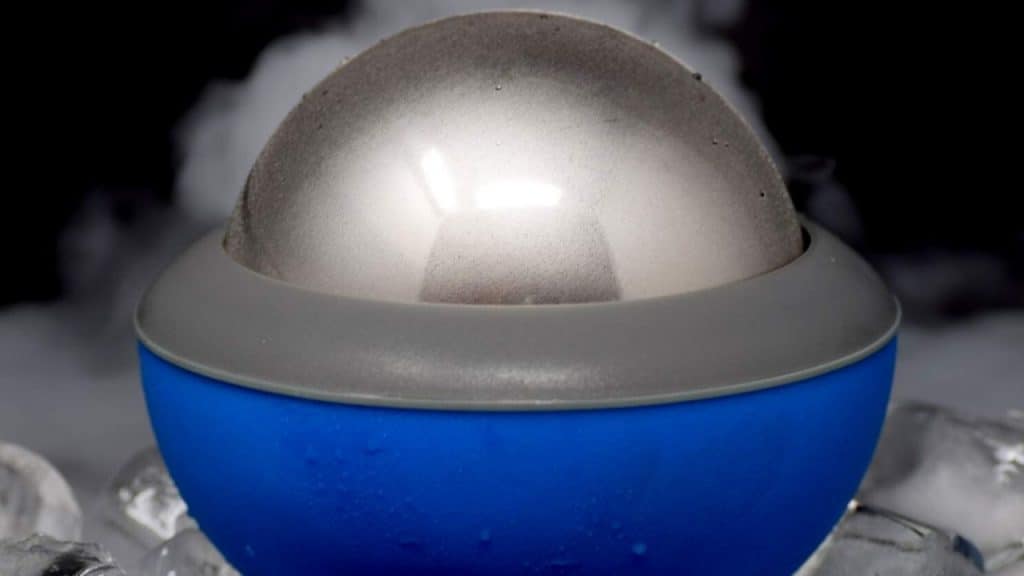Muscle knots can form after you’ve overused a muscle or sustained an injury, but they can also form for seemingly no reason at all. When you have a knot in your muscle – particularly in a difficult-to-reach area like your back – all you want is to get rid of it. They can be uncomfortable at best and painful at worst and may even trigger tension and pain in other parts of the body.
When you develop a muscle knot, the only solution is to break up the knotted tissue. Unfortunately, this can take time, even if you see a massage therapist for help. Here’s what you need to know about muscle knots and how to massage a muscle knot out of your back.
What is a Muscle Knot?
A muscle knot, technically known as a myofascial trigger point, is an area of contraction within the fiber of a specific muscle. A 2010 study published in the Archives of Physical Medicine and Rehabilitation defines them as, “hard, palpable, discrete, localized nodules located within taut bands of skeletal muscle and painful on compression.” In other words, a muscle knot is a tight knob of muscle that hurts.
Muscle knots can happen anywhere on the body, but you’ll usually find them on the back, shoulders, or neck – sometimes the gluteal muscles. When you touch a muscle knot, it might feel swollen or tense. Muscle knots can be sensitive or painful to the touch and may lead to aches in your muscles and joints.
Here are some of the potential causes of muscle knots:
- Overuse of the muscle
- Injury to the muscle
- Sedentary lifestyle
- Poor posture
- Dehydration
- Unhealthy eating habits
- Stress and anxiety
According to Dr. Adrian Chow, muscle fibers are designed to move – they are always contracting and relaxing, lengthening and shortening. When you spend the majority of your day sitting at a desk, however, the “muscle fibers begin to stick to each other, forming a knot.” So, while overuse and injury can certainly cause muscle knots, so can inactivity.

Who Tends to Get Muscle Knots?
Anyone can develop muscle knots because, after all, we all have muscles. The people who are most likely to experience muscle knots, however, are people who deal with chronic pain. About 97% of people who suffer from chronic pain experience trigger points and 100% of people with neck pain have them.
While chronic pain sufferers are the most likely to experience muscle knots, there are other factors which may increase your risk for developing them. You’re more likely to get muscle knots as you get older, if you suffer from an underlying medical condition, or if you have fibromyalgia. Psychological stress is also a major risk factor for muscle knots.
How to Relieve Muscle Knots
Relieving muscle knots takes time but there are things you can do to break up the knotted tissue to give yourself some relief. Rest is important, so take a break from the activity that’s causing the knots to develop or that aggravates the condition. Not only should you be resting from these activities, but you should be focused on relaxing – stress can make your muscle knots worse.
Here are some other techniques for relieving muscle knots:
-
- Stretching – While you should avoid overusing the muscle that’s knotted, some gentle stretching could help relieve some of the tension. Avoid stretches that cause you pain and don’t push your muscles too far. Hold the stretch for at least 30 seconds and release it slowly.
- Exercise – Another way to stretch your muscles is to use them – aerobic exercise can help you work out muscles in your neck, back, and shoulders. Aerobic exercise helps increase blood flow which may help relieve tension in the body – just don’t push it too far.
- Heat/Cold Therapy – A combination of heat and cold can help reduce inflammation and relieve pain caused by muscle knots. Apply a cold compress to the affected area then remove it for at least 15 minutes before repeating. You could also try a heating pad or a warm bath to help relax stiff muscles and reduce pain – it may also boost blood flow.
- Acupuncture – This practice involves inserting tiny needles into the skin to relieve pain and tension by activating the nervous system and triggering the release of endorphins. Dry needling is a similar practice that can be used to release tension from pressure points and muscle knots.
- Massage Therapy – A professional massage therapist is trained to identify and release muscle knots. Massage helps boost circulation and increase blood flow, and it can address specific areas of concern where you have knots or tight muscles.
- Physical Therapy – If your muscle knots are a recurring problem, you may want to see a physical therapist to get to the root of the issue. In addition to helping you work out any existing muscle knots, the physical therapist can help you learn how to prevent them from recurring.
If none of the methods above work to relieve your muscle knots, you may want to seek outside help. Untreated muscle knots may not be dangerous or life-threatening, but they can interfere with your ability to complete daily tasks and could lead to other health issues. Talk to your doctor if your pain becomes severe or starts to impact your life and wellbeing.
Tips for Massaging Knots Out of Your Back
Massage is one of the best ways to address muscle knots, but it can be pricey to see a professional massage therapist – especially if you get muscle knots often. An alternative is to learn how to administer self-massage. Self-massage techniques are a great way to work out muscle knots, but it can be a challenge to execute them when the knot is located on your back.
Here’s a quick walkthrough of how to self-massage a muscle knot:
- Find the knot in your muscle using your fingers
- Gently massage the knot, pressing down firmly and making small circles with your fingers
- If you can’t reach the area, try using a tennis ball to roll it or apply pressure
Another way to administer self-massage is to use a tool called a massage gun. Massage guns deliver percussive massage therapy which uses quick pulses to reach deep into the muscle fibers. Like massage therapy, a massage gun may help ease tension, reduce inflammation, and boost circulation to the affected area which may help you release the muscle knot.
Here’s a quick walkthrough for how to use a massage gun:
- Turn the massage gun on to the lowest speed setting
- Locate the muscle knot with your fingers
- Guide the head of the massage gun to the muscle knot
- Place the head of the massage gun on the knot but don’t apply pressure
- Allow the percussive action of the massage gun to loosen the muscles
- Move the head of the massage gun slowly over the area
- Avoid keeping the massage gun in any one location for more than 60 seconds
When using a massage gun, it’s best to start on the lowest intensity until you get used to it. It’s important to make sure your muscles are warmed up before you increase the speed or pressure. If you’re having trouble reaching the knot in your back, lay down and ask a friend or partner to help.
How to Prevent Muscle Knots
Muscle knots are often the result of stress, overuse, or injury which means there are many simple things you can do to prevent them from happening. Using proper form when you workout is essential, and you should be warming up and cooling down properly.
Here are some additional tips to help prevent muscle knots:
- Pay attention to your posture when sitting down – your shoulders should be back and down (not hunched around your ears) and your back should be supported.
- Use proper form when working out or lifting heavy objects – always bend at the knee and use your legs to lift rather than your back.
- If you spend most of the day seated, be sure to take frequent breaks to get up, stretch, and walk around throughout the day to keep your muscles loose.
- Drink plenty of water and make sure your diet is healthy and balanced – nutrients like calcium, potassium, and magnesium are particularly important for muscle health.
- Spend 5 to 10 minutes warming up and cooling down before and after you exercise – be sure to also give your body time to rest between workouts.
Muscle knots are frustrating to deal with and they can really throw off your workout routine, not to mention interfering with your daily life. Follow the tips above to reduce your risk for developing muscle knots and, if you do, keep your massage gun handy so you can work them out quickly.
Frequently Asked Questions
How long does it take to massage a knot out?
Releasing a muscle knot can take time, so don’t try to rush the process. When administering self-massage techniques, focus on the affected area for 3 to 5 minutes at a time and repeat the massage 5 or 6 times daily or until it is resolved.
Can massaging a knot make it worse?
When massaging a knot, it’s important to be gentle. Applying excessive pressure or kneading the area versus gently massaging it can do more harm than good, leaving you feeling sore.
What does it feel like to release a trigger point?
A muscle knot is also known as a trigger point and it can feel like a marble or knot just under the skin. Pressing on the trigger point may cause some sensitivity, though it doesn’t always. Pressing on the trigger point for 30 to 60 seconds can release it – it will feel just like normal muscle afterward.


